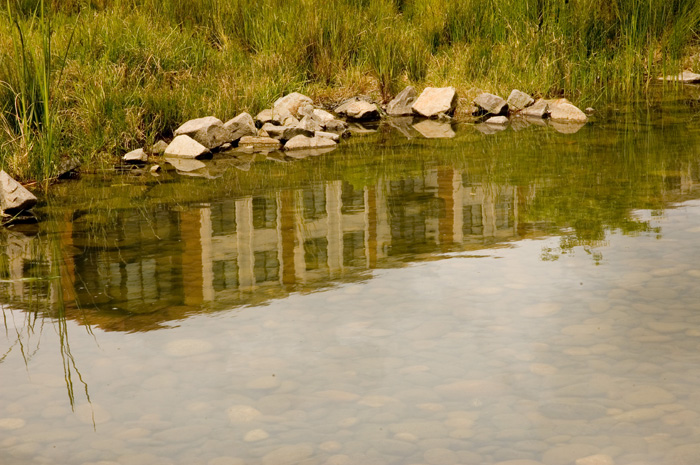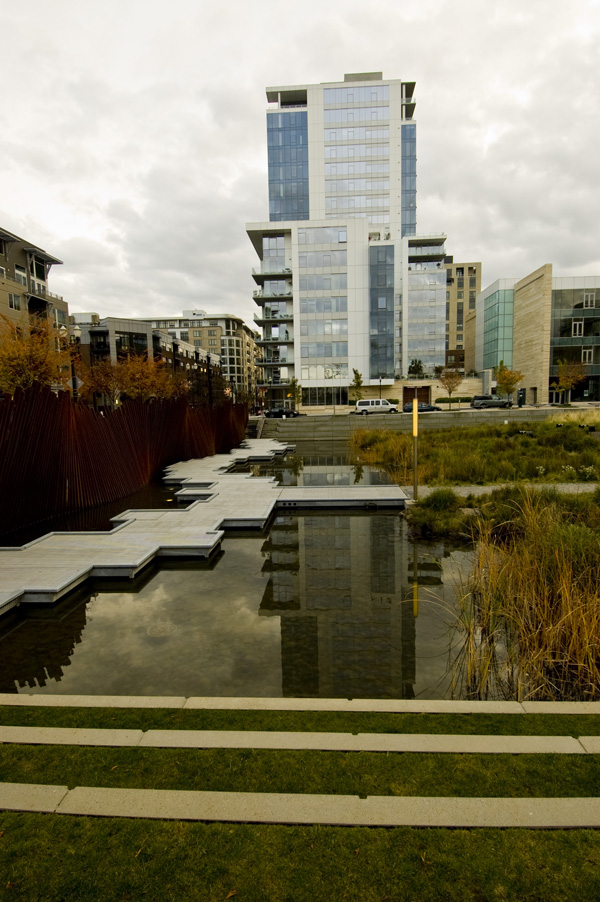
Tanner Springs Park just two blocks north of kid-friendly Jamison Square is a slice of the wetlands of another era. The park's designer and city organizers hope Tanner Springs will help to redefine the idea of an "urban" park. The park exudes a sense of seclusion despite the bustle all around it. City planners wanted it to be a place for contemplation and a place where people could appreciate the natural beauty of the area. But unlike some other parks, there are no basketball hoops, no swing-sets, or even an open field to toss a Frisbee.
A web of watery rivulets spreads over the park's sloping topography into a vast pond. The materials are simple: cobbles, water, beds of mahonia, stretches of wild-looking grasses, native trees. Pebbled paths lead to curvy metal benches and descending terraces of grass and concrete ideal for picnicking, reading or lounging. The breeze ruffles the grasses and stirs the surface of the pond. The water runs over boulders, its sound drowning out traffic noise. When you're down at pond level, the city disappears.
The century-old rail tracks that border the East side of the park, 180-foot-long, weaves along the edge of the water, part ancient fence and part the cleverest use of salvaged material ever. The German firm of Atelier Dreiseitl created the park. More than a hundred park stewards give tours and help maintain it.
Both art and wetland echo the history of the place, which was known as Couch Lake before it was filled for a railroad yard. Tanner Creek, which fed the lake, was buried in sewer pipes for years. Atelier founder Herbert Dreiseitl describes the project as peeling back the city's skin, its urban fabric, to reveal — but not attempt to replicate — its wetland past. Tanner Springs offers a science lesson in storm water recycling along with a hit of art and nature. All the rain that falls on the park drains to a cleansing biotope, then to an underground cistern for irrigation. This is the first city block in Portland where the sidewalks drain onto the site rather than into the streets and storm drains.

For more on the Tanner Springs History
City of Portland Parks page